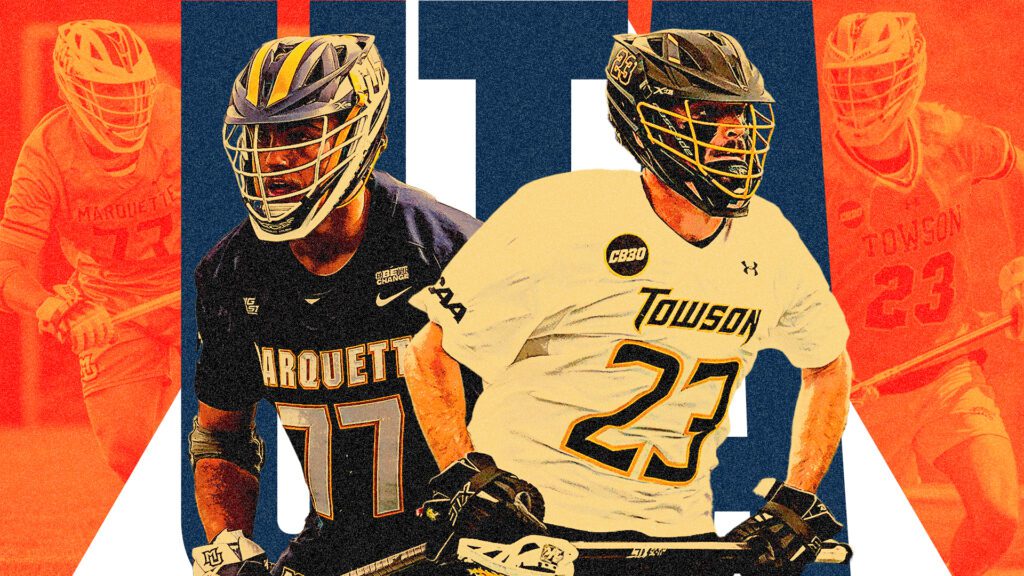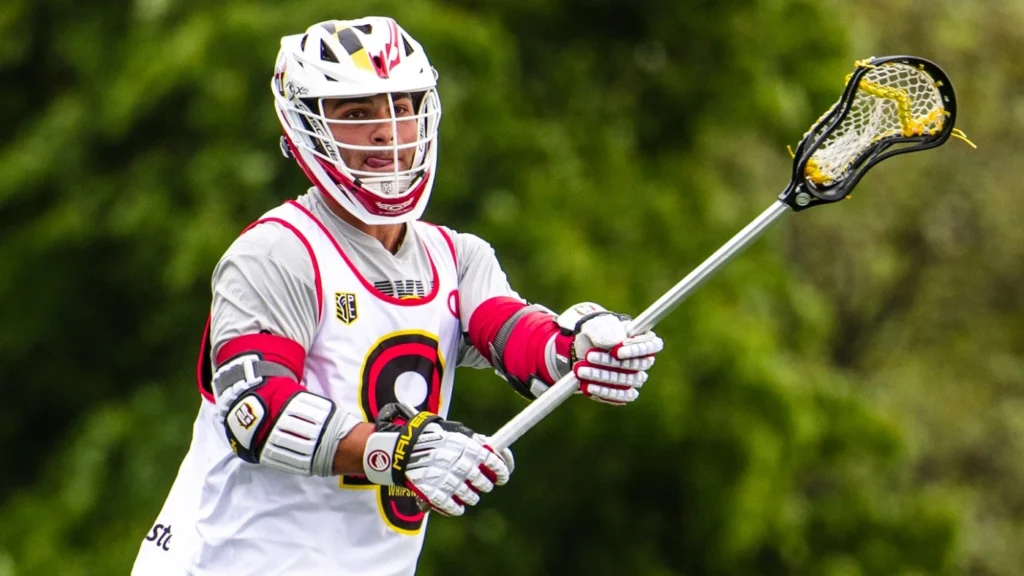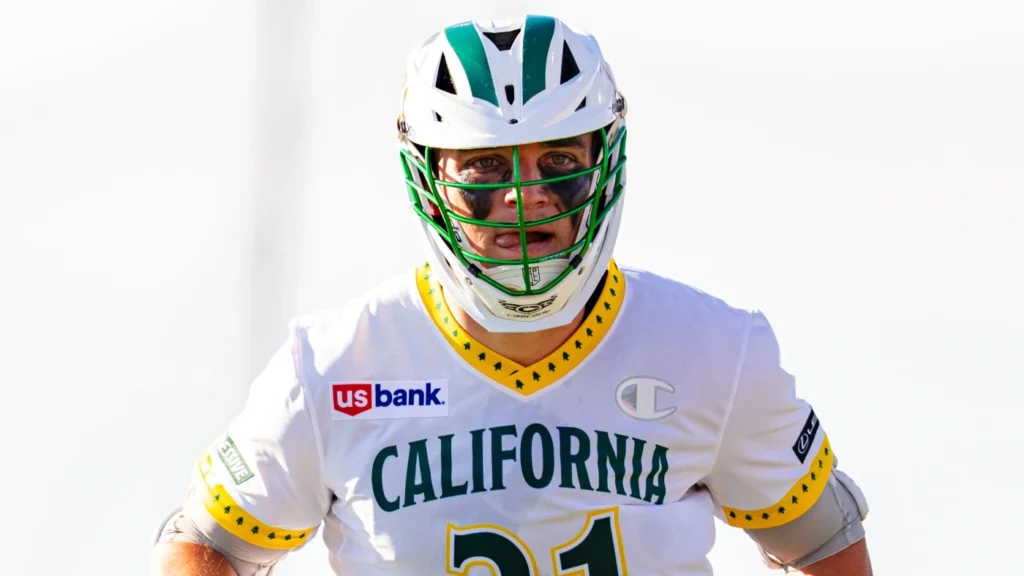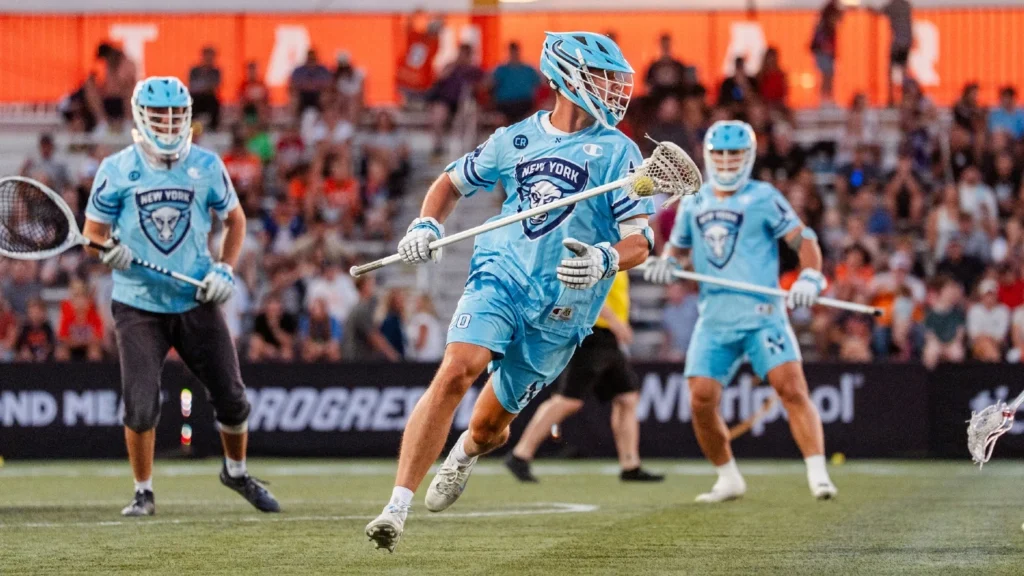
Evaluating Archers’ 2024 draft: Did reigning champs reach with surprise picks?
By Zach Carey | May 16, 2024
There’s a new class of Utah Archers joining the defending champs this summer.
Head coach Chris Bates and his staff prioritized filling Utah’s roster holes with the best fits available in the 2024 PLL College Draft. With training camp just a few weeks away, here’s a breakdown of the club’s newest additions:
Mason Woodward, 8th overall, Defense/LSM, Marquette
This offseason, the Archers lost a lengthy lefty defender who wore No. 77. With their first 2024 draft pick, they selected … a lengthy lefty defender who wears No. 77.
Woodward is awesome. There’s no two ways about it. The 6-foot-2, 210-pound Marquette product is a complete defender. He fits the Archers' mold of tall, powerful close guys. But he’s so much more than that. Woodward is sticky on ball, bothersome at the point of attack and a smart off-ball player. With Matt McMahon retiring, Woodward’s ability to split two on the backside will be a relief for defensive coordinator Tony Resch.
Woodward’s impact goes beyond what he does in six-on-six. He’s a roomba on the ground, can take faceoff wings and has plenty of experience sparking transition. He’s dangerous in transition offense. He’s comfortable slicing through a defense if it doesn’t respect him. Or, if he forces a slide, he can use either hand to get the ball to his teammates.
While Woodward can play LSM, Bates said the Archers “really feel like he can play close defense.”
“Cam Wyers and Jon Robbins are exceptional long-stick midfielders,” the coach added.
That implies that Woodward is the guy at close rather than the Jared Conners replacement. The Archers won't hand him the starting close job Day 1. Patrick Shoemay, third-round pick Colby Barsz and maybe a UDFA will be in the mix. But Woodward will be the favorite going into camp.
As for the value of taking Woodward at eighth overall, there’s some question there. He wasn’t on either of Paul Carcaterra’s 12-player big boards. He was 10th and then ninth on PLL analyst Adam Lamberti’s two big boards. Woodward is not the flashy name that Jake Piseno is, and he doesn’t have the big-game pedigree of Kenny Brower. But he has some of the best traits of those two guys with Brower’s strength down low and some of Piseno’s playmaking in the middle of the field.
Bottom line, Woodward makes sense for the Archers and what they needed in this draft. He’s a versatile pole who has the traits they prioritize. Could they have waited to get him with one of their next picks? Maybe. But there’s value in not taking that risk and getting the best fit at the biggest position of need.
Beau Pederson, 13th overall, SSDM, Michigan
In 2023, only nine SSDMs allowed a 20% or less shooting percentage as the closest defender. The Archers had two of those guys. In Pederson, they could have a third.
Pederson is an ideal short-stick prospect. At 6-foot-4, 210 pounds, he is an imposing physical presence. He will fit seamlessly into the Archers’ switch-heavy defensive scheme. He'll be able to take shoulders to the chest from bruising attackmen like Matt Rambo or Zed Williams. With his size, he’s susceptible to losing in space against elite jitterbugs like Michael Sowers, but his length means that he shouldn’t lose so badly that the defensive scheme can’t predict it.
Pederson will also be a valuable presence on faceoff wings and in early offense. He started his career at Princeton as an offensive midfielder, so he can create his own shot with either hand. That adds to the SSDM room's offensive threat after Connor Maher and Piper Bond thrived in transition in 2023.
A year after Dominique Alexander’s retirement, Utah has completely rebuilt its rope unit. It's unquestionably one of the best in lacrosse. Pederson is the club’s third SSDM draft pick in the last two years – Maher and Bond were second- and third-rounders in 2023, respectively – so the heavy investment is paying off.
While Latrell Harris recovers from his ACL injury, Pederson is a plug-and-play guy at short stick. When Harris is back, Pederson will push Maher to be on the 19-man roster. Whether he wins that spot or not, he makes the Archers’ rope unit more adaptable. Playing the Maryland Whipsnakes and their size on offense? Match that size with Harris, Bond, and Pederson. Need speed to counter the pace of Sowers and the Philadelphia Waterdogs? Then plug Maher in for Pederson.
Picked at 13th, Pederson was a good mix of one of the best players available who also matched one of the Archers’ few needs. He projects as a good-to-great short-stick defender in the PLL and will only solidify what was already a strength for Utah.
Dyson Williams, 16th overall, Attack, Duke
Only eight players in Division I college lacrosse history have scored 200 goals, and the Archers now have two of them on their roster.
Williams is every defensive coordinator’s worst nightmare, and it’s not because he’s going to dominate his matchup or create offense for others. Against Williams, a defense’s first two slides can be perfect, but if the third isn’t, the Duke star will exploit that immediately. He’s a menace on the backside. He finds slivers of space in the defense and makes them look like the Grand Canyon.
With TJ Malone still on the board at 16, the Williams pick was intriguing. Malone looked like the perfect prospect for Utah as lefty depth. He can be an initiator or an off-ball guy with attack-midfield versatility and a ton of experience playing with Mac O’Keefe and Grant Ament.
But Utah went with the Canadian Williams. That suggests the Archers’ staff believes that they don’t need another cook in their kitchen of elite dodgers. Instead, they prioritized elite off-ball play. Playing alongside passers like Tom Schreiber and Ament, Williams’ value skyrockets. He’ll also be a plus in the two-man with Connor Fields — with whom he played for Team Canada last summer — and O’Keefe on the lefty wing.
He will have to fight for a 19-man roster spot. Realistically, Utah might not even have room for another offensive player. Is Williams good enough to supplant Challen Rogers and Ryan Aughavin? That’s yet to be seen. For now, he’s quality lefty depth and will be a unique threat if and when he plays.
Colby Barsz, 24th overall, Defense, Towson
Barsz was one of the surprise picks of the draft. The three-time All-CAA first-teamer was not on many big boards or mock drafts. But Utah stuck to its guns and took the guy it wanted at a spot where the Archers could use depth.
Barsz is as lanky as they come. At 6-foot-5 and 190 pounds, there isn’t a ton of meat on those bones. Where he wins is by using his length to get to hands quickly. He’s not the quickest or the strongest. But his wingspan can mask that because he can get to an opponent’s hands sooner than most.
How Barsz defends in tight could determine how successful he is in the PLL. When his wingspan stops mattering and a matchup comes down to core strength, he’s vulnerable. How he fares against Fields and Matt Moore in camp will tell the staff a lot about his potential. He played LSM in his sophomore season at Towson. So if battling with the bruisers down low is an issue, he could bump up top where his length could be more beneficial in space.
Barsz was definitely a reach at 24. He was outside of Lamberti’s 63-man big board and probably would’ve been available for the club at pick No. 32. There were also a number of poles that were higher on the consensus boards still available. But the Archers saw something they liked and bet on their evaluation over anybody else’s. That was a major theme for them in this draft.
California Redwoods’ 2025 third-round pick for 32nd overall
In pure draft value terms, this might’ve been the best move Utah made. That’s not a knock on the guys they drafted. But by sending the 32nd overall pick to the Redwoods, the Archers nabbed a pick that will be eight to 15 spots better next year.
So what if it’s a 2025 pick? The Archers filled the holes they had with their first three picks. They got a depth piece with their fourth. They claimed four talented undrafted rookies who can fight for roster spots. And they got a pick that could be midseason trade ammo, a tool to trade up next year or a top-20 player in the 2025 draft. It was an ideal trade.





